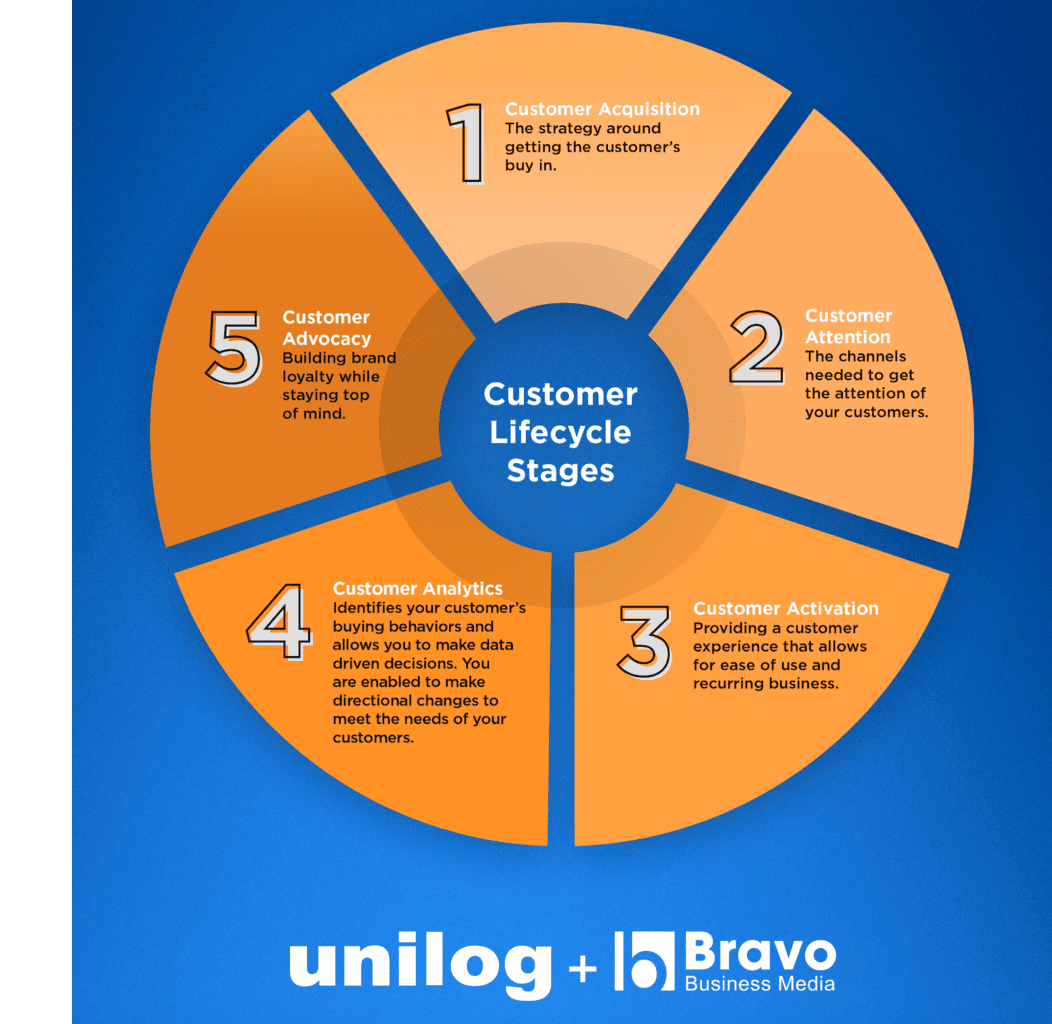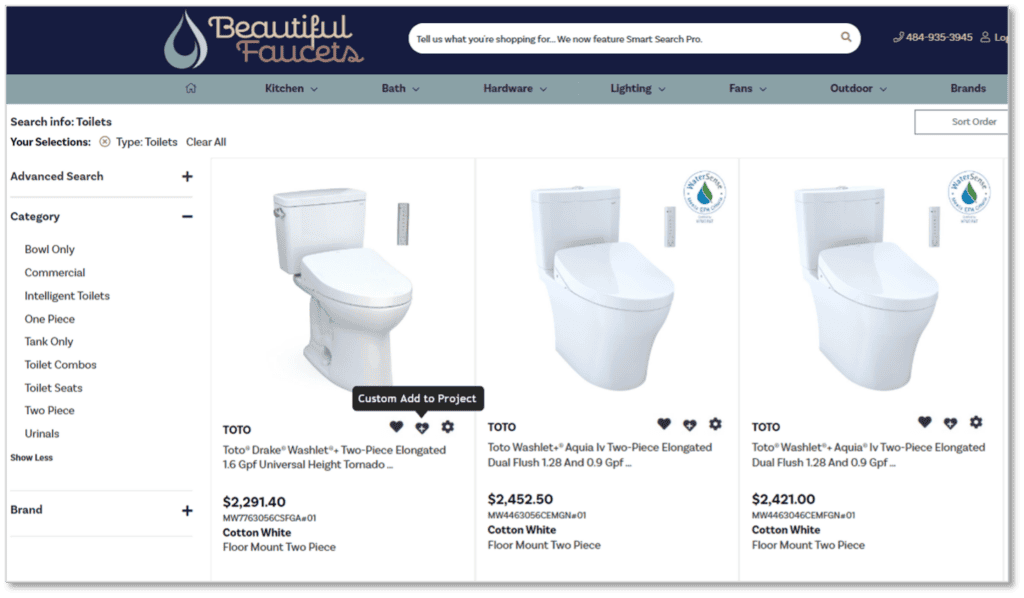You’ve built your business around the needs of your customers. You offer great products, excellent customer service, and the tools and resources they want to make buying with you more efficient and convenient. One of those tools is an...

You’ve built your business around the needs of your customers. You offer great products, excellent customer service, and the tools and resources they want to make buying with you more efficient and convenient. One of those tools is an eCommerce site – an online extension of your business that gives customers self-service options while still having the ability to connect one-on-one with a sales or service representative. Digital commerce platforms provide the features and functionality to meet your customers where they are, but they also offer a pathway to growth for your business.
At its core, a great eCommerce platform helps you navigate through the customer lifecycle to help you secure and retain customers. Think of the customer lifecycle as a roadmap buyers take when interacting with you. Each of the five stages, or objectives, of the lifecycle engages the buyer in different ways, and that engagement leads them to the next stage in the cycle.
At Unilog, we built our eCommerce solutions specifically to address and manage all five stages of the customer lifecycle. The CX1 Platform from Unilog combines the product content, technology, and tools to deliver next-level experiences for your customers.
How can one platform help engage and advance customers through these stages? When you have the right eCommerce solution in place, it’s quite easy. Let’s break down each stage of the customer lifecycle and show you where eCommerce adds value.
1. Customer Acquisition
Goal: Drive customers to your website with the intent to buy. This first stage can be the most challenging stage to surpass, which is why differentiation is key to getting people to notice you.
How eCommerce helps: A content- and feature-rich website strengthens your local presence while exposing you to new customers, products, and opportunities. Robust product content that’s SEO-optimized attracts search engines, which then rank your website higher in search results to increase your reach and brand awareness.
2. Customer Attention
Goal: Once a buyer is on your site, keep them on your site. First impressions go a long way, so if your site doesn’t immediately capture their attention, they’re likely to go elsewhere.
How eCommerce helps: Well-designed platforms leverage an enterprise-grade cloud infrastructure to ensure fast and reliable performance. They also feature powerful onsite search tools that enable site visitors to find products quickly and easily. Engaging content continues to play a role in this second stage of the lifecycle as well. A content management system (CMS) within eCommerce software gives you the ability to create unique content like attention-grabbing banners and customer-specific promotions on your web pages.
3. Customer Activation
Goal: Buyers stay on your site and make a transaction. You’ve got their attention, now you want to encourage them to add items to their cart and place their order.
How eCommerce helps: At this all-important third stage of the customer lifecycle, your eCommerce site’s tools and functionality take center stage to help turn the buyer into a customer. Current product pricing and availability – which requires tight integration with your ERP system – must be on display for your items, as well as plenty of accurate product information to help them make a purchasing decision. Once they’ve decided to pull the trigger, make it effortless for them to place their order by offering easy Add to Cart buttons and an advanced shopping cart with multiple payment options. Onsite tools like an account dashboard where they can view and track their order provide added convenience and fuel a memorable customer experience.
4. Customer Analytics
Goal: Identify your customers’ buying behaviors and decision points to find ways to keep engaging them time and time again.
How eCommerce helps: Your website platform collects massive amounts of data about your visitors and customers. Website analytics tools help you track and measure everything from buyer behaviors and bounce rates to abandoned carts and average order value. A sophisticated analytics tool takes this wealth of data and digests it into easy-to-read reports that provide actionable insights to help you improve your site, drive deeper engagement with users, and keep your customers coming back.
5. Customer Advocacy
Goal: You’ve achieved a happy customer, know more about their behaviors, and have learned their need; now you need to convert that customer into a loyal advocate.
How eCommerce helps: As you move further up the value chain to reach the fifth and final stage of the customer lifecycle, use your eCommerce platform to reinforce your brand, your products, and your offerings. Integrate tools like loyalty programs, personalized promotions, and drip marketing campaigns to keep your customers engaged, show how important they are, and that you’re here to help.
With the right eCommerce solution, one platform can help you manage every stage of your customer lifecycle. Unilog’s CX1 eCommerce platform is feature-rich, flexible, and built to seamlessly integrate with your existing tech stack, enabling you to realize operational efficiencies so you can focus on your customers.
If customer lifecycle management is a key initiative for your business, you don’t want to miss our EVOLVE 2023 event on October 16-19, 2023, in Orlando, FL. We have 30-plus sessions planned, including interactive workshops, instructor-led lessons, and roundtable discussions all related to the customer lifecycle. From platform deep dives and demos to idea sessions and networking opportunities, EVOLVE 2023 has something for everyone. Check out our blog, 5 Reasons to Attend EVOLVE 2023, to learn more.
If you’re involved in your company’s eCommerce efforts and want to Discover the Power to Prosper, sign up for EVOLVE 2023 today!
The post Use Your eCommerce Platform to Manage the Customer Lifecycle first appeared on Unilog: B2B eCommerce Software & Product Content Services.










